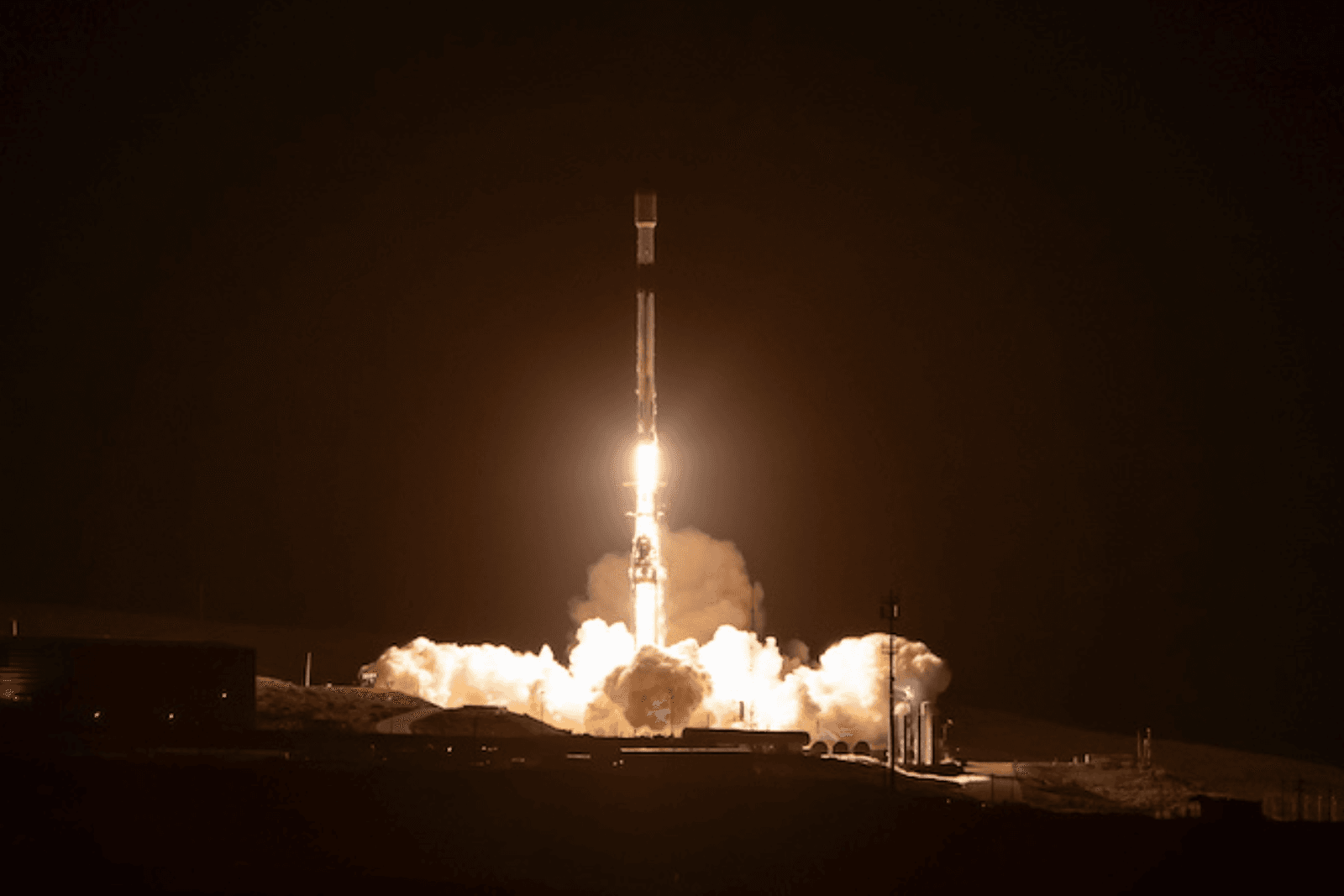Introduction
SpaceX continues its ambitious journey to revolutionize global connectivity with its latest Starlink satellite launch from Cape Canaveral Space Force Station. The mission, known as Starlink 6-68, deployed 24 Starlink V2 Mini satellites into low Earth orbit, further expanding SpaceX’s satellite internet constellation. This launch underscores SpaceX’s commitment to bridging the digital divide through a network that promises high-speed internet access worldwide, even in remote locations.

Table of Contents
Mission Overview: Starlink 6-68
The Falcon 9 rocket lifted off from pad 40 at Cape Canaveral Space Force Station, Florida, as the first rays of sunlight illuminated the Atlantic coast. Originally scheduled for a 5:45 a.m. EST (1045 UTC) liftoff, the actual launch occurred at 8:21 a.m. EST (1321 UTC) due to adjustments in fueling. The Starlink mission, carrying 24 Starlink V2 Mini satellites, is part of SpaceX’s goal to construct a constellation that delivers internet to every corner of the globe.
Weather Conditions and Launch Preparations
The 45th Weather Squadron closely monitored weather conditions leading up to the launch. With an 85% chance of favorable weather, the squadron assessed cloud patterns, cumulus formations, and wind gusts. A frontal system from the north brought a drier trend, minimizing potential rainfall but creating breezy conditions with gusts around 20 mph. SpaceX’s team coordinated timing and fueling with precision, awaiting optimal conditions for a smooth launch.
Falcon 9’s Record-Breaking First Stage Booster
A highlight of this mission is the Falcon 9 booster, tail number B1076, which achieved its 18th launch. Known for its impressive track record, this booster has supported numerous missions, including Ovzon-3, Intelsat 40e, CRS-26, and nine Starlink launches. The Falcon 9 first stage successfully landed on SpaceX’s droneship, “Just Read the Instructions” (JRTI), marking the 97th landing on this platform and adding to SpaceX’s growing tally of reusability milestones.
Key Moments of the Launch
Following liftoff, the mission achieved key objectives in under 10 minutes:
- Stage Separation: Falcon 9’s first stage separated smoothly, allowing the second stage to propel the satellites toward orbit.
- Droneship Landing: Less than eight minutes after liftoff, the first stage landed on the JRTI droneship, a critical maneuver for SpaceX’s reusability goals.
- Payload Deployment: The 24 Starlink V2 Mini satellites deployed successfully, boosting SpaceX’s internet constellation in low Earth orbit.
Impact of Starlink Expansion on Global Connectivity
The addition of each new batch of Starlink satellites significantly enhances internet availability for users worldwide. Starlink’s low Earth orbit positioning enables lower latency compared to traditional satellite internet services, making it suitable for diverse applications, from rural internet access to remote business operations. SpaceX’s goal is to cover underserved regions where high-speed internet has been historically inaccessible, transforming connectivity on a global scale.
The Future of SpaceX’s Starlink Constellation
SpaceX aims to launch tens of thousands of satellites to complete its Starlink network, with plans for ongoing launches to maintain and expand coverage. As satellite technology evolves, so does SpaceX’s mission to bring reliable, high-speed internet to all areas, reducing the digital divide and enabling new opportunities for global communication.
Conclusion
The latest SpaceX Starlink satellite launch marks a milestone in advancing global internet connectivity through cutting-edge satellite technology. With each mission, SpaceX edges closer to a world where high-speed internet is accessible everywhere, underscoring the company’s mission to create a connected planet.






I do not even know how I ended up here, but I thought this post was great.
I do not know who you are but definitely you are going to a famous blogger if
you are not already 😉 Cheers!